The ways in which people organized their settlements and landuse is reflected archaeologically in the types and distributions of material culture, tools, and cultural features on a site. The horizontal distribution of material culture across a site provides a wealth of information about a variety of activities engaged in by site occupants, such as potential workstations, and the overlap of material culture and tool types.
Spatial clusters are clearly present within the site limits for each chronological component. For the Late Woodland and Late Archaic components, activities (represented by tools) map onto several cultural features, confirming the use of these zones as core activity areas for site occupants. For the Late Woodland component there is overlap of all material culture/tool types around five of the six features. Site use during the Late Archaic is centered on the single feature (a likely hearth), with evidence for bifacial tool production, hunting and butchering activities, and the use of flake tools. The Transitional component is similar to the Late Archaic component, with the overlap of biface production and hunting/butchering activities within the cluster. The Early Woodland material culture patterns are centered on only a handful of excavation units, and there does not appear to be much spatial overlap between bifacial tool production (confined primarily to Cluster A [see figure]) and the tools assigned to hunting and butchering activities (Cluster B [see figure]). There is no clear “clustering” of material culture or tools around the single hearth feature.
For all periods of site use, people were engaged in a limited number of site activities, focusing primarily on making bifacial tools (e.g., projectile points) and hunting and butchering tasks. The data suggest a series of short-term uses or specialized use of the more marginal landscapes along the edge of Canadarago Lake. Most activity areas center on or at least near features (probable small hearths) forming the center or core of site activities during the Late Woodland, Early Woodland, and Late Archaic periods of site use. The Transitional component lacked any cultural features, but the recovery of FCR suggests at least one hearth was likely created during this period of site use. As expected, given the site functions (resource-processing and/or raw material extraction) and the environmental context, there is limited evidence for woodworking or plant-processing during the Late Woodland and Early Woodland periods of site use; these tasks are absent for the Transitional and Late Archaic periods. Analysis also suggests that people were increasing their intensity of site use over time from the Late Archaic to the Late Woodland. All material culture increases in total number (or weight) and density, as well as tool variability from the earliest periods of landuse (Late Archaic or Transitional) to the later periods of the Early Woodland and Late Woodland. These patterns suggest either more intensive intervals of occupation during the more recent periods or possibly larger site populations, particularly during the Late Woodland. In terms of site function and task patterns, during the older periods of site use occupants were focused more intensively on hunting and butchering related tasks (likely associated with resource processing), with less emphasis on making bifaces. During the Late Woodland and Early Woodland periods of site use, people were heavily invested in making bifacial tools (such as projectile points). This may be because people were using this area along the lake edge on a short-term basis for extracting valuable nearby raw materials for stone tools.
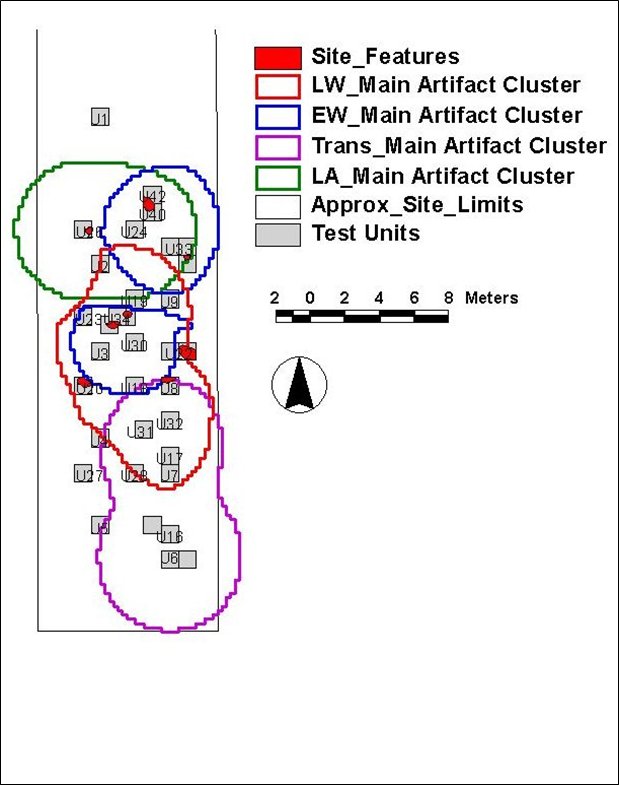
Main material culture clusters by component at the southern end of the Canadarago Lake I site.
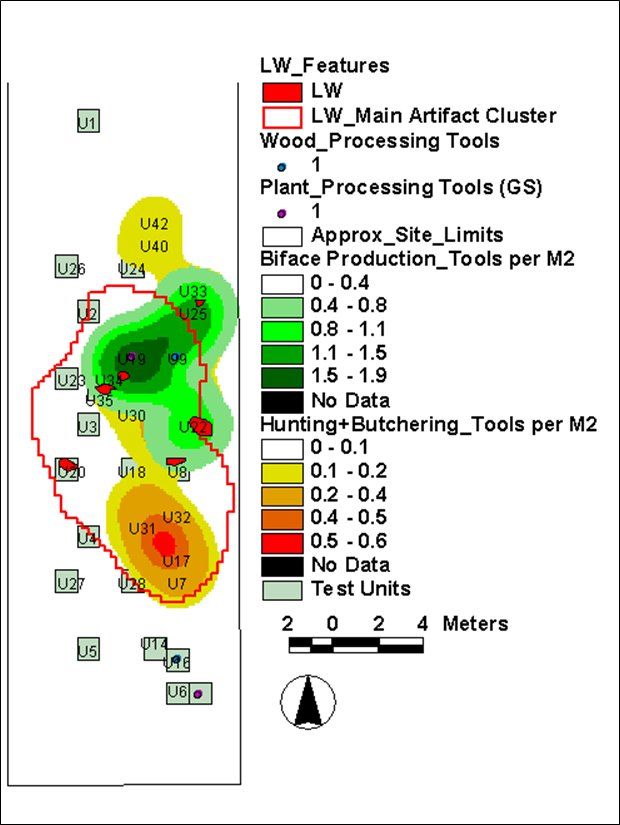
Functional tool package within the Late Woodland main material culture cluster.
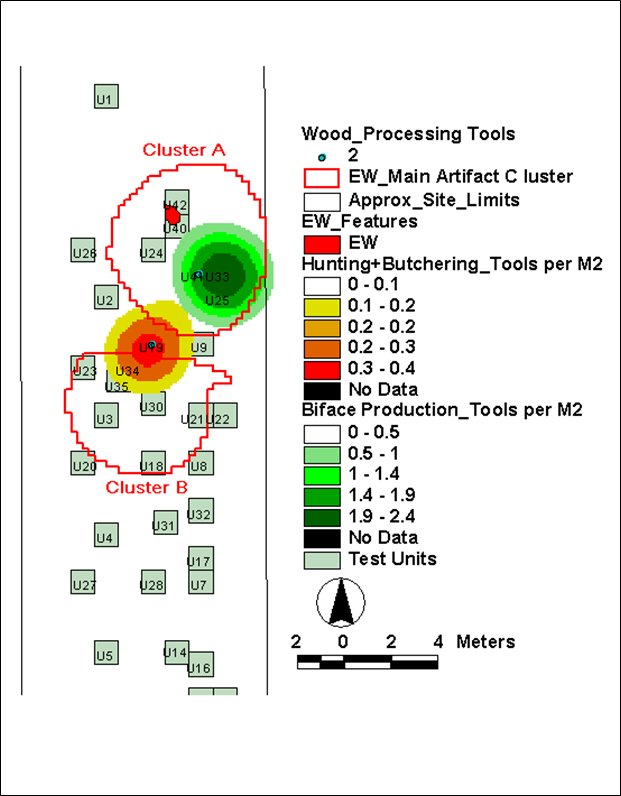
Functional tool package within the Late Woodland main material culture cluster.
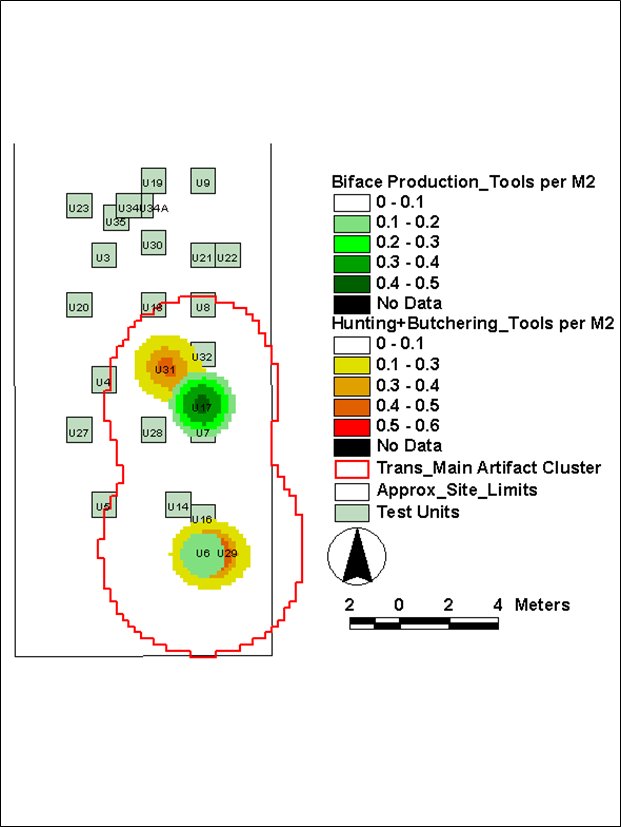
Functional tool package within the Transitional main material culture cluster.
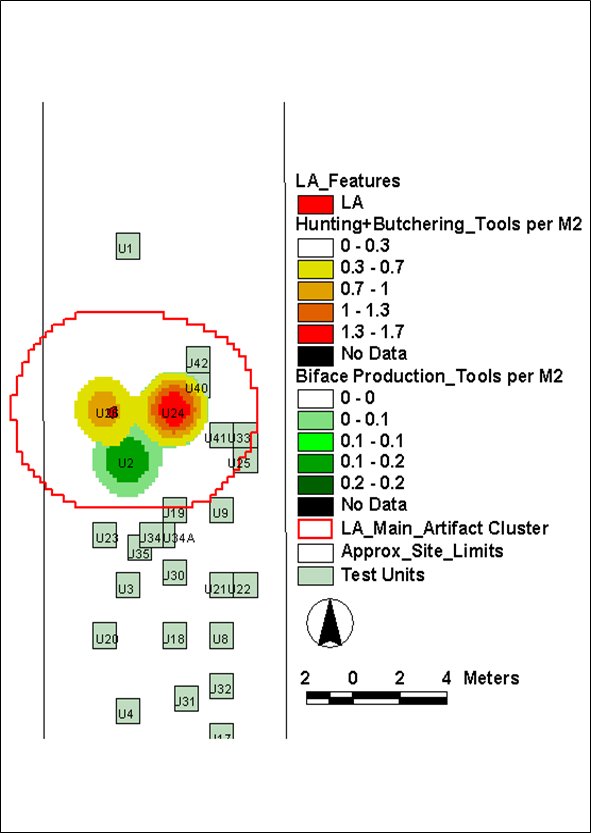
Functional tool package within the Late Archaic main material culture cluster.